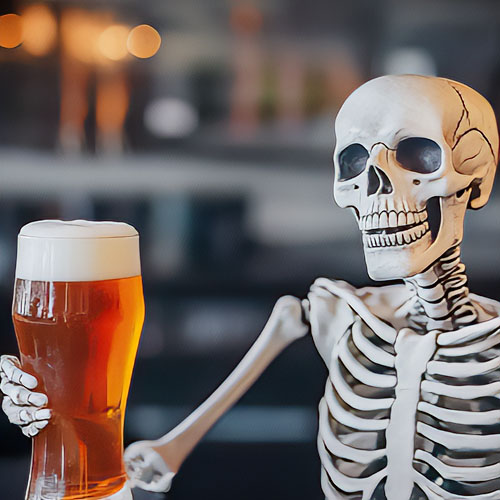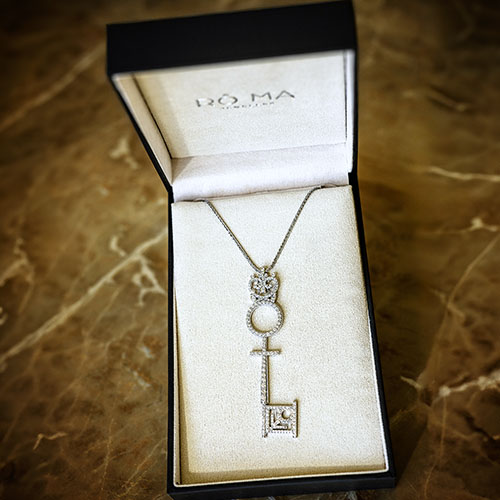Decades Of Noxious Ideological Battles Have Left The West Divided
Out of The Frying Pan and Into The Riots
Writing about current events in the “post-COVID” world is a tough gig. Things move quickly, and everything I come up with these days is out of date by the time it gets published. Last time I filed for Penthouse, it looked like the sheer craziness of it all had peaked.
But a couple of days later, the murder of George Floyd would reverberate around the world like a twenty-first century Franz Ferdinand. An enormous vat of kerosene had been poured on the dying embers of our disjointed, shell-shocked post-corona world.
It wasn’t as if the protesters didn’t have a point — at least initially. Any reasonable person would be horrified that an American citizen could be summarily executed, on a public footpath, in broad daylight, by uniformed officers with the motto, “To Protect with Courage, To Serve with Compassion” emblazoned on their shoulders.
And more to the point, it would be naïve to deny that there was a racial element to Floyd’s death. We don’t know about any particular prejudices held by Derek Chauvin — who importantly was since sacked and now faces murder and manslaughter charges — but we do know that black Americans do face disproportionate attention from the police.
Failed Democratic presidential candidate Mike Bloomberg admitted as much himself five years ago when he said that, as mayor of New York, he “put all the cops in minority neighborhoods…because that’s where all the crime is.” Presumably, the city of Minneapolis — which has not elected a Republican mayor since 1957 — has a similar modus operandi.
But even by the standards of what passes for contemporary political debate, the popular reaction to George Floyd morphed into obnoxious and twisted performance art with astonishing speed. Within a couple of days, what started out as understandable and important public anger was fed through the familiar meat grinder of social media, infused with Marxist claptrap, and hijacked by professional anarchists. And so, right on cue, the riots began.
Up in Smoke — Smoldering
Much has been made about the difference between the actual protests — which have been largely peaceful — and the violent antics of a minority, but that is somewhat beside the point. Violent or not, the response to the killing of George Floyd did not have anything close to the courage of Martin Luther King marching on Washington or Rosa Parks refusing to give up her seat. There was a nasty, subrational nihilism at play.
Whereas King and his cohort invoked American ideals like the notion that “all men are created equal,” groups like Black Lives Matter have declared those same ideals inherently racist. Decades of misguided revisionism — ranging from the New York Times’ discredited 1619 Project to the perennial push to have monuments and statues removed for one reason or another — has fueled the notion that the American project has been poisoned by various evils from the start, that it is not worth saving.
Never mind that many of the shops that were looted and destroyed were owned by Black Americans. Never mind that Black police officers were among the ones killed in the riots. Never mind that the Fifty-Fourth Massachusetts Regiment — the memorial for which was one of the many defaced in the riots — was comprised entirely of Black soldiers. Everything must go. Everything.
The Democratic governors and mayors presiding over the riots were predictably quick to point the finger at Trump, but they had only themselves to blame. It was the culmination of decades of cynical race-baiting, the logical conclusion of the poisonous identity politics that has entrenched itself in the underbellies of America’s major cities.
While the right was talking about equality of opportunity and the dignity of work, the left had spent years building a dystopian hellscape of equality of poverty and the misery of deprivation. In the interest of “social justice,” self-proclaimed progressives crammed vulnerable minorities into brutalist housing projects, replaced genuine economic opportunity with a welfare check, blamed the ensuing disadvantage on “systemic racism,” and expected the victims of the whole perverse state of affairs to reward them at the ballot box. It was a strategy that worked for a while — until it didn’t.
A couple of months back, during the “first wave” of global lunacy, I let myself cultivate a vague hope that at least some good might come out of it. As terrible as the coronavirus and consequent societal destruction was, I thought that it might reacquaint the western world with a sense of perspective.
For a while, I thought that the coronavirus saga would deliver electro-shock therapy to a world that had spent decades mired in puerile and tawdry debates over nonexistent problems and monstrously counterproductive solutions. At the very least, the wrack and ruin rained down on ordinary people of every color and creed would scuttle the undergraduate idea that all the world’s injustices — real or imagined — could be attributed to things as superficial as one’s skin pigmentation and sexual organ.
But with George Floyd’s death, identity politics came roaring back, like some god-awful Hollywood sequel with a lousy plot and bigger budget. It wasn’t about one man’s deeply unjust and probably unlawful death. It wasn’t even about the disproportionate policing of Black Americans and their overrepresentation in the criminal justice system. It was about America itself, about the dangerous fiction that subsumes the complexities of the human condition into a crude maze of warring tribes that requires state coercion or worst still violent force to rectify historic and present “power imbalances” between them.
Black Lives Matter burst out of the blocks, demanding “an end to the systemic racism that allows this culture of corruption to go unchecked.” Sundry other troupes of identarian lunatics jumped in, too, bringing their own esoteric grievances with them. And when the reliably fascistic Antifa decided that it wanted a piece of the action, too, cities were set ablaze and the looting got underway.
And the most remarkable thing of all was that almost nobody spoke out against it, much less tried to stop them. Not even the mayors of the cities being burned, not even journalists who saw the havoc firsthand, not even corporations whose retail outlets were destroyed and then eventually boarded up.
Up in Smoke — Ablaze
But the strangest response by far was from the medical establishment, which had every bleedingly obvious reason to oppose mass protests, no matter how righteous their cause. They didn’t. In fact, large segments of the medical profession ended up supporting them — including many doctors who took to the streets themselves — with the tenuous justification that racism was a “public health issue” that outweighed an extremely contagious strain of viral pneumonia. And the police, who had until then enforced “social distancing” measures with bloody-minded force, stood down and took a knee.
From that point on, any and all coronavirus restrictions became effectively meaningless. The same corrupt political class that had inundated the population with stern warnings that the most basic forms of human interaction would send people to their graves apparently had no issue with tens of thousands of people gathering in close proximity for a protest which — however noble its initial motivation — would probably achieve absolutely nothing. The eruption of mass demonstrations should have brought the social distance warriors and the social justice warriors into direct and irreconcilable conflict. Amazingly, it didn’t.
But then again, were the two camps really that dissimilar to begin with?
What is the difference between confining people to their homes and confining them to their racial identity group? What is the difference between blindly accepting the catastrophism of deeply flawed epidemiological models spawned by one corner of academia, and blindly accepting the catastrophism of deeply flawed neo-Marxist and postmodern theory spawned by another? What is the difference between destroying thousands of businesses by government edict, and burning them down?
The chaos and devastation of the year two thousand and twenty is the culmination of a corrosive, cancerous philosophical shift that has been in train for decades. All of the sorrow and senseless loss that we are dealing with now can be traced back to the point in human history when we stopped seeing the human race as inherently good with the potential for great achievement, and started seeing it as inherently destructive with the potential for, if left to its own devices, great injustice.
Naturally, the only solution is to save people from themselves, via state coercion or even violent force if necessary. Racism and the coronavirus are two very different phenomena, but the principle is the same: People can’t be trusted to look after each other. Our only hope is to turn to enlightened authorities who know better than we do.
To observers of history, this is all starting to look hauntingly familiar. The post-corona and post-Floyd world looks a lot like Europe between the two world wars, in which economic devastation and a toxic web of racial, class, and ideological tensions precipitated arguably the most destructive event in human history.
Groups like Black Lives Matter and Antifa are the equivalent of the paramilitary gangs that marched around Europe as the liberal democratic state was in retreat. The equal and opposite reaction will come in the form of noxious right-wing militia groups, with their numbers quite possibly inflated by otherwise reasonable people seeking to protect their lives and property as police throw their hands up. It’s only a matter of time.
Meanwhile, as was the case in the 1930s, a deeply authoritarian, highly militarized and increasingly belligerent world power watches on. China is already testing our resolve, its territorial ambitions laid bare in its de facto annexation of places like Hong Kong, its militarization of the South China Sea, and, most recently, skirmishes along the Indian border. And it knows full well that the west has never been weaker, more divided, more vulnerable.
The disastrous response to COVID-19 and souped-up identity politics hysteria are similar, and not just because of their capacity for deep societal damage. They also come from a similar place — from the exhausting mishmash of university groupthink, millennial sensibilities, and corporatist risk aversion. They come from what Jonathan Haidt dubbed “safetyism” — being safe at all costs, both physically and emotionally, and almost always with hefty state intervention. Safety is not just one concern among many anymore, it is sacrosanct — the be-all and end-all when it comes to the extent of state power, how it should be used, and, most importantly, against whom.
Safety is important, and any liberal or conservative worth their salt will tell you that public order is a critical and essential function of the state. But freedom is also important. So are living standards, the inherent worth and dignity of the individual, and the vibrancy and richness that comes from societies with liberty, not victimhood, as their moral bedrock.
Up in Smoke — Out of Control
The great irony, of course, is that for all of its foibles and vicissitudes, turning our back on freedom has thrown the Western world into a state of pervasive, existential, and quite possibly irreversible danger. For all our obsession with safety, we have never been more vulnerable.
Should you have your own Up in Smoke experience, feel free to share via our Contact Form. We might like to tell your story too. Should you wish to think some more about the long-term social paradigm shift, we suggest a collection of smart-people thoughts on the subject.



















